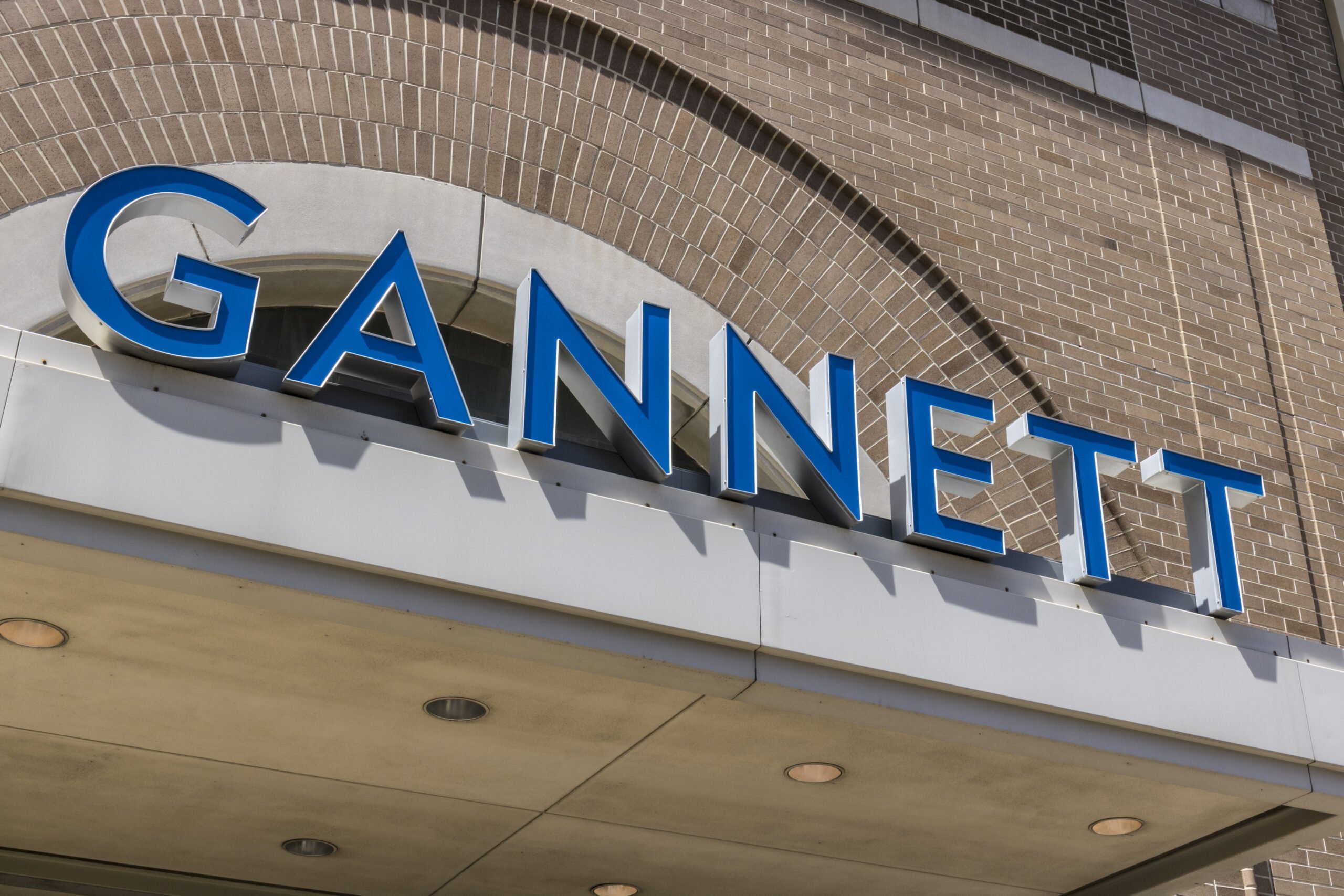The media company experienced its fourth consecutive quarter of growth in Q1 2024. It reported its “most pronounced sequential trend improvement in nearly three years” in its earnings report on Thursday, according to Chairman and CEO Michael Reed.
Total digital revenue for Q1 was $277 million, up 2.9% year over year. Gannett’s digital business represented 42.1% of its overall revenue, an all-time high. That number includes subscriptions, digital advertising and digital marketing solutions (DMS).
The company, which operates the USA Today Network, an extensive network of local newspapers and special interest and lifestyle brands, pointed to recent partnerships with other non-news publishers as instrumental to its ad revenue growth.
Partnerships struck last year with non-news media companies, such as homeowner-focused Home Solutions and sports betting publisher Gambling.com Group, contributed to Gannett growing its Q1 page views by 10% YOY.
In total, digital ad revenue was $84.5 million, up 5.3% YOY, while digital subscriptions accounted for $43.5 million, a 21.3% increase. DMS represented the largest chunk, at $116.1 million.
“This growing audience and increased engagement offers us great potential for diversified, predictable and repeatable digital revenue growth,” Reed told investors on the earnings call.
Regarding Gannett’s content strategy and methods for growing its audience, Reed highlighted the efforts of Chief Content Officer Kristin Roberts, who joined the company last March.
The past year was all about maximizing engagement, Roberts said. Growing engagement means leaning into the topics that draw audiences. “This includes entertainment updates, guides to living your best life and multiplatform experiences based on content we are already creating,” she said.
If it sounds like Gannett is looking beyond hard news to bolster engagement, you’re on to something.
In addition to expanding its portfolio of lifestyle content, Roberts said Gannett is “doubling down on highly successful verticals such as sports,” which brings its network 50 million average monthly unique visitors, according to Comscore.
Gannett’s programmatic business was also up for the quarter, “fueled by the increase in platform page views, as well as rebounding CPMs,” said Chris Cho, president of digital marketing solutions.
The DMS business includes Gannett’s LocaliQ in-house agency brand, which offers local advertisers a suite of marketing automation and campaign management tools. Its 3.7% Q1 growth rate beat Gannett’s 1% to 2% growth projections, thanks to “a strong rebound in our largest vertical: home services,” Cho said.
Gannett is also currently beta-testing an AI-enriched customer relationship management platform with 30 advertising partners (in case you were wondering whether an earnings call in 2024 would pass without a mention of AI). Cho believes this investment will increase Gannett’s total addressable market for programmatic advertisers.
So why does Gannett seem so bullish on everything but its news business?
Probably because it’s growing increasingly difficult for news orgs to generate ad revenue, thanks to overzealous brand safety blocklists and efforts by search and social platforms to stop redirecting audience attention to news sites.
Google, for example, has become increasingly hostile to news publishers, using generative AI to surface news insights directly in search results, thus removing the need for users to click through to news sites.
In response to an investor question, Reed addressed the lawsuit Gannett filed against Google last year over its dominance in the digital ad market. Though he didn’t want to say much at this early stage of the suit, he noted similarities to the Department of Justice antitrust lawsuit against Google that’s set to go to trial in September.
Reed also pointed to Gannett’s efforts to lobby Congress for more news publisher protections by passing the Journalism Competition and Preservation Act (JCPA). Although he said it’s unlikely the act passes in this contentious election year, he’s encouraged by state-level actions like the California Journalism Preservation Act. And he’s optimistic the federal JCPA bill will see more progress in 2025.
Digital-native brands are racing to break free of their social media roots to reach a broader base of US customers. For many brands, this means betting big on sports.
Criteo split out its retail media segment revenue for the first time during its earnings report on Thursday.
By next year, Google will have three separate business lines – Search, YouTube and Cloud – with an annual run rate to generate at least $100 billion, CEO Sundar Pichai told investors.
If you’re looking for a think piece about what Google’s most recent third-party cookie deprecation delay means for the online ad industry – this isn’t it. 😅
The IAB projects digital video ad spend will rise to $63 billion in 2024, representing a 16% increase from last year. Of the three video ad categories the report breaks out (social and online video and CTV), the clear winner is social video.
Pour one out for third-party data. These days, AB InBev’s digital marketing strategy is built squarely on first-party data.
Google used its NewFronts stage to unveil updates to DV360 that should make it easier for advertisers to manage campaigns across Google and other connected TV publishers.
Criteo split out its retail media segment revenue for the first time during its earnings report on Thursday.
Meta’s NewFronts presentation on Thursday was Reely focused on AI. But seriously, folks, Meta has three intertwined obsessions right now: short-form video, the creator economy and artificial intelligence.
There are other motivating factors for crossing the LUMAscape, besides increased efficiency and less ad fraud. These businesses are trying to position themselves to win in a transformative era that will make or break many ad tech companies.
This week, the AdExchanger Commerce Newsletter catches up with Shopify, which, in the past couple of years, quietly became one of the most important players in online advertising, despite rarely being thought of in the category.
AdExchanger is where marketers, agencies, publishers and tech companies go for the latest information on the trends that are transforming digital media and marketing, from data, privacy, identity and AI to commerce, CTV, measurement and mobile.
